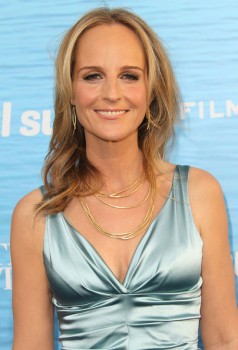A Very Extra-Ordinary Place
HURRAY! My friend, David Cantero, and I made it.
AVAILABLE NOW!
Just in time for the holiday giving 2012!
A very extra-ordinary old woman with magical powers wants to share her very extra-ordinary gifts with her very ordinary neighbors.
The very ordinary village, full of very ordinary people doing very ordinary things, is soon to become a very extra-ordinary place indeed. But first the wise old woman with magical powers must discover a way to visit her neighbors without them knowing it is she.
Joy and laughter, music and dancing all make life very extra-ordinary
Click on the book cover below to purchase.
A Very Extra-Ordinary Place marks our first collaboration. It is a delightful and beautifully illustrated children’s book.
For more information about the story, sample pages and where to buy look HERE!
Embracing Death for Ourselves and Our Patients
I have the honor of having an essay of mine published on NurseTogether today.
“I want to celebrate my belief that living well and dying well are one and the same thing. I’m not talking about adjusting deathbed pillows so that the dying people can strike heroic poses for the edification of onlookers. I’m talking about achieving a good death in the context of real dying – with all its unpredictability, disfigurement, pain, and sorrow.”
My name is Richard. I’m the founder of PARADIGM/Enhancing Life Near Death, a nonprofit organization with an outreach to terminally ill, seriously ill, elder, and dying people. I’m also the author of the newly published The Amateur’s Guide To Death And Dying. I’ve been invited to share some thoughts with you about my personal journey on patient deaths.
Although I’ve been working in this field for 30 years, I should probably say from the onset that witnessing patient deaths is not something I chose to do. It was more like this work chose me. Let me explain.
I finished my doctorate in San Francisco in 1981. That same year a mysterious thing began to happen. Gay men all across the country began to sicken and die from an unknown disease. Was this a diabolic plot of some kind? Perhaps it was divine retribution. Or was this simply a very serious medical emergency? The AIDS crisis had begun in earnest.
Because of my background in religion and psychology, friends turned to me for guidance, but I’m afraid that I had nothing to offer them. Nothing, in all my years of schooling, had prepared me for what was happening to the people I loved. I was petrified. All my greatest fears were being realized. What did it all mean? It was a desperate time and I was powerless. I could do nothing but sit and watch the nightmare unfold.
As it turned out, sitting and watching was the best thing I could have done, because as fate would have it, this time I was to be the student, not the teacher. In time, I became less anxious. The monstrous thing I feared for so long was being transformed. I was able to sit with death and not be afraid. Death was no longer the enemy, she had become what St. Francis called her, ‘sister death.’
Years of going from one death scene to another with hardly a break in between was exhausting but also rewarding. I began to see patterns develop. Despite the uniqueness of each death, I noticed there were two things all these deaths had in common. They were difficult and lonely affairs.
Difficult because in this culture we have a hard time recognizing when things are over, especially the things we enjoy – summer vacation, relationships, our youth and even life itself. This is a problem because being unable to acknowledge the end of something makes saying goodbye and thank you impossible.
And they were also lonely affairs, because the wisdom people come as they approached the end of their life often died with them. There simply wasn’t a medium for collecting this abundant wisdom and thus it was frequently lost.
Most people face their mortality in a vacuum of information and support. It is as if each of will have to learn to die from scratch, as if no one had died before us.
I figured there had to be a better way to deal with this fundamental fact of life. That’s why I’m here. I want to take a fresh look at my mortality, and do so in an interactive and positive way.
I look forward to other opportunities to address the topic of patient deaths and even dying as a personal issue in the weeks to come. Thank you for this opportunity to join you.
Complete Article HERE!
Beyond “The Sessions”: Intimacy at end of life
I did a little follow-up interview with the wonderful people at Life Matters Media.
November 16, 2012
Beyond “The Sessions”: Intimacy at end of life
Dr. Richard Wagner
Dr. Richard Wagner, a Seattle based clinical sexologist, spoke with Life Matters Media this week about the many positive effects physical intimacy may have on the terminally ill. As the critically acclaimed film The Sessions has brought this topic to the forefront, it has left in its wake many issues in which to delve deeper. Wagner, a former Roman Catholic priest, is the author of “The Amateur’s Guide to Death and Dying: Enhancing the End of Life.” He has practiced sex therapy and relationship counseling for more than three decades.
You have a degree in theology from the Jesuit School at Berkeley, and you’re a former priest. How did you get involved with end of life and intimacy?
I was a Catholic priest for 20 years. While that wasn’t a particularly happy association, I’m the only Catholic priest in the world with a doctorate in clinical sexology. I wrote my doctoral thesis on the sexual attitudes and behaviors of gay priests in the active ministry in 1981. That was long before the Church was willing to acknowledge there was even such a thing as a gay priest. The fallout from this research blew my ministry out of the water.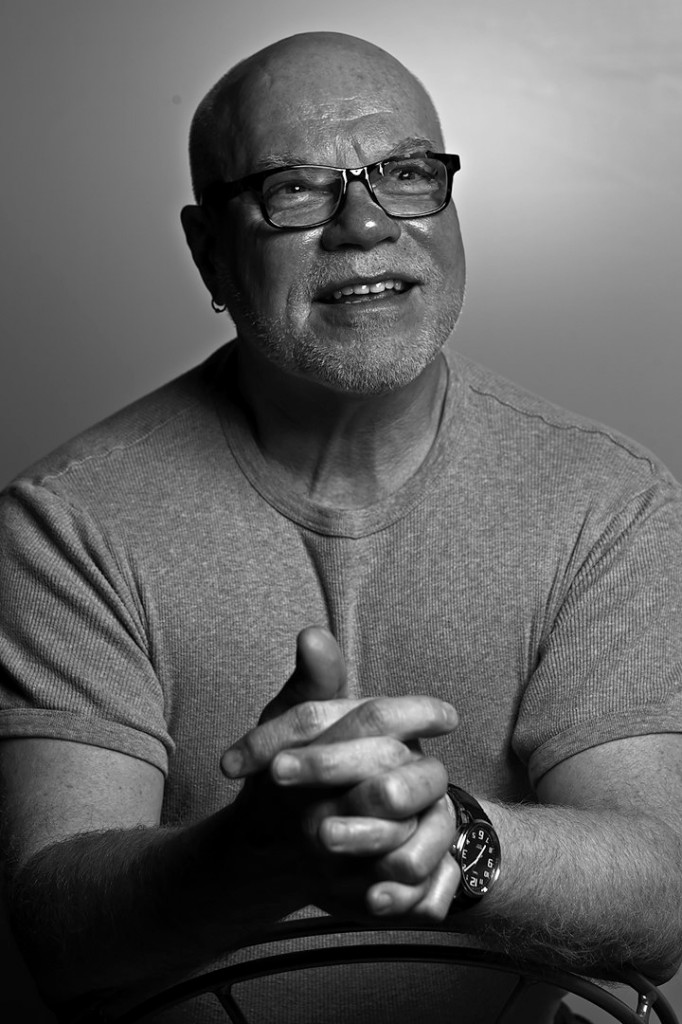
In 1981, the same year I finished my doctorate, a remarkable thing was happening to gay men in San Francisco and elsewhere. They were dying of some mysterious disease. Some speculated that this was God’s retribution for the gay lifestyle. How quickly we leap to that conclusion when we are ashamed and frightened. Most of my friends died in the first wave, between 1981-85. None of us knew what to do. My friends looked to me for guidance, since I had a background in psychotherapy and religion. But, to tell you the truth, I was just as lost as anyone.
I found myself sitting with all these men as they were dying. It was ghastly. But sitting with death was precisely what I needed to do. It helped me to desensitize death and prepared me for what was to come. I realized early on that dying in America is often a very lonely and very passive affair.
I wrote “The Amateur’s Guide” because of the work I was doing with sick, elder and dying people – not just AIDS patients. I saw this pattern develop; the end of life is more difficult than it needed to be. In response I founded Paradigm, a nonprofit organization with an outreach to enhance life near death for sick, elder, and dying people. It provided an opportunity for participants to discuss end of life concerns and get the support they needed to fully live the end of their life. The program was so successful; I decided to put the program in book form.
Let’s talk about intimacy and end of life care.
Just because someone is dying doesn’t mean that they have stopped being human. One of the things that humans need in their life is intimacy. And sometimes that intimacy involves genital sexuality. But this concern is hardly ever talked about in terms of the end of life, nor is it included in disease-based discussions. I mean, when is the last time you heard someone talk about the sexual concerns of people with cancer or heart disease? Our culture is uncomfortable with the concept of sick, elder, and dying people having such desires. But if you listen to these folks they’ll tell you what they need and ho difficult it is to live without.
Could sexual intimacy be considered a form of palliative care?
I would think, yes. If you’ve had an active intimate/sex life up until the point you were diagnosed and then all that suddenly disappears, there will be problems. I’m not just talking about genital sexuality; I’m talking about all intimacy needs we humans have — being present to, touching, as well as pleasure. It’s all about what is possible, on a personal level, with one’s intimate partner(s). So many people, even people who love sick, elder, and dying people don’t know how to touch them. And sick, elder, and dying people often report that the only touch they receive is very clinical touch. And that’s not all the life affirming, if you ask me.
Complete Article HERE!
Anticipatory Grief Webinar
I have the pleasure of announcing an upcoming webinar on the topic of anticipatory grief with my colleague, Janet Edmunson.
Registration form and more information HERE!
What’s this grief I feel? My loved one hasn’t died yet!
by Janet Edmunson, M.Ed.
Tuesday, January 29, 2013
For family and professional caregivers
Webinar will be 30 minutes in length.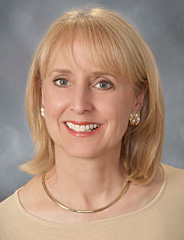
All attendees will be entered into a drawing for Janet Edmunson’s book Finding Meaning with Charles.
7:00 p.m. (Eastern)
6:00 p.m. (Central)
5:00 p.m. (Mountain)
4:00 p.m. (Pacific)
Webinar Description: Caregivers often face grief before their loved one dies. Professionals call that anticipatory grief. In this webinar, Janet will share her experiences with anticipatory grief along with ways to help cope with it while you continue to care for your loved one.
About Janet: Janet has over 30 years’ experience in the health promotion field. She retired in May 2007 as Director of the Prevention & Wellness for a staff of 20 at Blue Cross Blue Shield of Massachusetts. Since retirement, as President of JME Insights, she is a motivational speaker having spoken to hundreds of groups across the U.S. While working full-time, Janet took care of her husband, Charles, during the five years he fought a movement disorder with dementia. Janet wrote about her experience in her book, Finding Meaning with Charles. Janet has a Master’s degree from Georgia State University. She resides in South Portland, Maine.
Facing Mortality Head On
I’m proud to announce the posting of an interview with me about my new book — The Amateur’s Guide To Death and Dying; Enhancing the End of Life. The interview is posted on IJ Wood’s site, Conscious Departures.
Click on the Conscious Departures banner above for the full interview.
 Several months ago I became I became acquainted with Richard Wagner Ph.D and had the pleasure to read his book The Amateur’s Guide to Death and Dying. His work with people facing end of life issues is inspired and admire his fearless approach to going into territory most consider taboo and awkward. Richard Wagner has been working with terminally ill, chronically ill, elder and dying people in hospital, hospice, and home settings for over 30 years. He facilitates support groups for care-providers and clinical personnel, and provides grief counseling for survivors both individually and in group settings.
Several months ago I became I became acquainted with Richard Wagner Ph.D and had the pleasure to read his book The Amateur’s Guide to Death and Dying. His work with people facing end of life issues is inspired and admire his fearless approach to going into territory most consider taboo and awkward. Richard Wagner has been working with terminally ill, chronically ill, elder and dying people in hospital, hospice, and home settings for over 30 years. He facilitates support groups for care-providers and clinical personnel, and provides grief counseling for survivors both individually and in group settings.
He founded Paradigm Programs Inc, an innovative nonprofit organization with a mission to be an outreach and resource for terminally ill, chronically ill, elder and dying people. He was honored with the prestigious University of California San Francisco Chancellor’s Award for Public Service in 1999 for his work with sick, elder and dying people.
His book is a valuable contribution to the body of work available for coming to terms with end of life issues and one I wish I had when K was alive. Having been the primary caregiver and the one person who was with K day and night using a tool like this would have been invaluable. There comes a point where a person just doesn’t have the strength to do much, but they still do want to communicate. I could imagine K and I reading it together (me reading it aloud), and doing the exercises. It could have provided a great format for the both of us to have those important and uncomfortable, conversations in an engaging way. At the very least it would have provided us a good platform to work with.
This is not a passive book. Richard Wagner takes an approach that makes the reader part of the story. In it you become one of the participants in his work group along with a number of people coming from different cultural backgrounds dealing with a variety of issues from cancer to old age. You are a participant, not a fly on the wall, and if you allow yourself to enter his world and take the exercises to heart you will find yourself going through a very fulfilling process. For this reason I feel that this book must be approached when you or your loved one has the appropriate energy and mental acuity to take it all in. There are 10 members in the group, and if you intend to follow their contribution to the group it takes some effort.
I was so impressed with Richard’s approach and the experience behind the book that I felt I needed to meet him and do an interview. We met by phone. Here are his responses to my questions:
IJ: In your years as a health professional, what do you consider the biggest lessons you’ve learned about caring for someone with a terminal illness?
RW: I tend to lump health care professionals into two groups — healing and helping. As a psychotherapist, I consider myself as part of the later group — those who help.
The biggest lesson I’ve learned is that precious few of us are able to face our mortality on our own. This tends to complicate an already difficult situation, because few of us who are facing our mortality have people around willing to walk through this with us.
When I started to be present to sick, elder and dying people some 30+ years ago I began to see certain patterns develop. Despite the uniqueness of each death I noticed two things that all these deaths had in common; they were difficult and lonely affairs. Difficult because, in our culture we have a hard time recognizing when things are coming to an end, especially the things we enjoy. This is a problem because being unable to acknowledge the end of something makes saying good-bye and thank you virtually impossible. They were lonely affairs, because those who were dying often felt useless and disconnected. It was like they were dead before they were dead.
IJ: How has this affected you personally?
RW: This had a profound effect on me. Because I soon began to realize that the marginal status our culture assigns to the end of life, with all its fear, anxiety, isolation and anger is inevitably what each of us will inherit in our dying days. I either had to come up with an alternative approach, or I would crash and burn. I saw so many valiant fellow healing and helping professionals burn out; they just couldn’t face their inner turmoil and grief any longer so they had to leave the work they were doing. And I did not want that to happen to me.
I figured there had to be a better way to deal with this fundamental fact of life. So I decided to take a fresh look at my own mortality, because that seemed to be the most likely place to begin if I wanted to help others face their mortality. In time, I became less anxious. The monstrous thing I feared for so long was being transformed. I was able to sit with death and not be afraid. Death was no longer the enemy, she was becoming what St. Francis called her ‘sister death.’ Besides, death links us to the great round of nature. I found that comforting.
When I began to ask the sick, elder and dying people I was working with if they wanted to join me in this endeavor I discovered most were up for the adventure. I mean it was a no-brainer for most. They knew better than I that few opportunities exist for them to connect with others similarly challenged in a purposeful life-affirming way. I was encouraging them to take a lead role in orchestrating their finales; they were no longer expected to be unobtrusive, dependent on the kindness of others and to wait patiently for the curtain to fall.
IJ: What was your goal and inspiration behind writing the book The Amateur’s Guide to Death and Dying?
RW: Let me take you back to the early 1990’s. I was successful in getting some like-minded people together for mortality-oriented support groups. Initially there was some resistance, however, because most of the people who joined my early groups were only familiar with disease-based groups. People with cancer met with other people with cancer if they met with anyone at all; people with HIV only met with other people with HIV if they met with anyone at all. But I was proposing something really radical. I was suggesting that facing one’s mortality had very little to do with a disease process, it had to do with simply being alive. I had to keep reminding them that the thing that connected us was our mortality, not a disease, or aging process.
I figured if our focus is our mortality, we wouldn’t get bogged down with the medical issues we faced as “patients.” This freed us up to find practical solutions to the end-of-life concerns each of us had. And we would be able to receive the support we needed to design our own strategy for successfully navigating our final life passage.
By the mid 1990’s I had enough of these groups under my belt to create a pilot program for a nonprofit organization I had founded, PARADIGM; Enhancing Life Near Death. I called it the Access Program. It was seminar/support group hybrid, a two-hour a week commitment for ten weeks.
With the help of a handful of experts in their field, doctors, clergy, nurses, therapists and lawyers, participants were able to face their mortality head on. They gained perspective on numerous issues related to modern dying … whether it’s filling out a durable power of attorney form, answering provocative questions about sexuality and intimacy, completing a death anxiety survey or personally designing a unique end-of-life plan … they were totally involved and engaged. And this had a startlingly positive effect on the group members.
After a few years of successfully doing these groups I realized that I was reaching only a very tiny percentage of the people who might benefit from such a program. Even when I was doing two groups simultaneously, one in the afternoon and one in the evening, I wasn’t able to keep up with the demand. The only solution was to write a book.
I figured that if I could simulate participation in an actual PARADIGM, group in workbook form, my potential outreach would be enormous.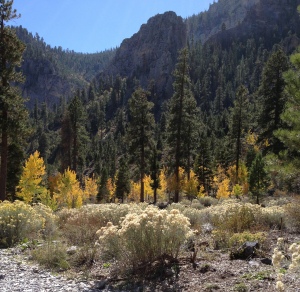
IJ: Who are you gearing this book towards?
RW: The short answer is — all those mortals out there.
My workbook is primarily for those currently facing their mortality — chronically, terminally ill, elder and dying people. But concerned family and friends, healing and helping professionals, lawyers, clergy, teachers, students, and those grieving a death will all benefit from joining in. Because, as we all know, none of us is getting out of here alive.”
IJ: The way you designed the book is unique. What was your thought process for coming up with this idea?
RW: As I mentioned, it was imperative that The Amateur’s Guide To Death And Dying simulate participation in an actual PARADIGM, group. Just writing a book about my experiences or my philosophy about living and dying simply wouldn’t cut it. There were already a lot of those kinds of books in the marketplace.
If I was going to do this, it was going to have to be something really unique. It was going to have to fundamentally change the conversation. It was going to have to give those who were without a voice a chance to speak out about their concerns. And it would have to advocate for the holistic self-determination for those facing the end of their life.
The most exceptional aspect of The Amateur’s Guide is its format. Readers become part of an on-the-page support group. Ten diverse fictional characters, representing a broad spectrum of age, race, and life situations inspire strong reader identification and provide essential role models for enhancing life near death. This unique presentation exposes the reader to a myriad of life situations and moral dilemmas that arise as one faces his or her mortality head on.
Besides the group process, six presenters, each an expert in his/her field, offer timely advice designed to help the reader make the end of life less an intimidating process and more a rich, poignant transition.
IJ: What are you wanting people to take away from the process you put them through?
RW: I hope the reader will be able to celebrate our shared belief that living well and dying well are one and the same thing. I hope the reader will find his/her voice as well as the confidence he/she needs to engage others in their end of live conversation.
I know that conscious dying has become kind of a buzzword these days and maybe it’s even lost some of its original meaning. I think conscious dying means learning how to relinquish control before circumstances wrestle it away from us. In many cultures detachment is an art form. In many religious traditions detachment is a virtue. Perhaps there is something here for each of us to consider. Ultimate control has little or nothing to do with being able to manipulate externals, which I’m sorry to say, also includes our bodies. Ultimate control is about inner peace and wellbeing. And these are not dependent on being “well” or being “whole”.
And just to be clear, I’m not talking about adjusting deathbed pillows so that dying people can strike heroic poses for the edification of onlookers. I’m talking about achieving a good death in the context of real dying—with all its unpredictability, disfigurement, pain, and sorrow.
IJ:What sort of reactions have you had so far with the book?
It’s all been exceptionally positive so far, even the reviews I’ve been getting from my end of life professional peers. This kind of surprised me at first, because the book is such a radical departure from everything else in the genre. But everyone seems to be enjoying the refreshingly new take on this age-old problem. They love the interactive aspect of the workbook. People are telling me that the fun, engaging yet poignant style of the book is helping them work through their own issues.
IJ: For further support, after reading the book what do you suggest people can do?
RW: Here’s the thing. If you read through the whole book, if you participate in all the discussions, if you do all the homework and exercises you will, at the end of the book, be prepared for and have the confidence to discuss all your end of life concerns with the significant others in your life.
You will have everything you need to break open a discussion with your lawyer about estate planning and advanced directives. You’ll have everything you need to address your intimacy needs with your intimate partner. You will have everything you need to open a discussion with your spiritual advisor about your faith. You will have everything you need to have a frank discussion with your physician about palliative care, comfort care and your thoughts about assisted dying.
The Amateur’s Guide To Death And Dying can be used to start your own group of people who want to face their mortality; even if that group is made up of just one other person. You can see the ripple effect this will have, can’t you? I hope the reader will take every opportunity to share what s/he learned with all those who might benefit, because, as you know, there are a whole lot of amateurs out there.
If you are interested in purchasing the book here’s the link: The Amateur’s Guide to Death and Dying
Complete Article HERE!
The Sessions
I have some marvelous news!
My good friend and colleague, Dr Cheryl Cohen Greene, is a sex therapist and surrogate partner therapist. On October 26, 2012, Fox Searchlight Pictures will release a movie, The Sessions. It’s the poignant story of her work with one of her famous clients, journalist and poet Mark O’Brien. The movie is finally being released to the general public after a round of critically acclaimed premieres at film festivals all over the world.
Helen Hunt plays Cheryl in the movie. The cast also includes John Hawkes and William H. Macy.
Click HERE to listen to Part 1 of my interview with Cheryl for my SEX WISDOM show.
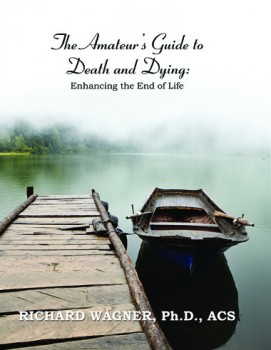 Cheryl and I have another connection too. If you’ve spent any time with my new book, The Amateur’s Guide To Death and Dying; Enhancing the End of Life, you will probably remember Cheryl from Chapter 6. She did the presentation on sex and intimacy concerns.
Cheryl and I have another connection too. If you’ve spent any time with my new book, The Amateur’s Guide To Death and Dying; Enhancing the End of Life, you will probably remember Cheryl from Chapter 6. She did the presentation on sex and intimacy concerns.
I am so proud of Cheryl, the work she does, and the recognition she is finally receiving for her groundbreaking work with sick, disabled, elder, and dying people.





